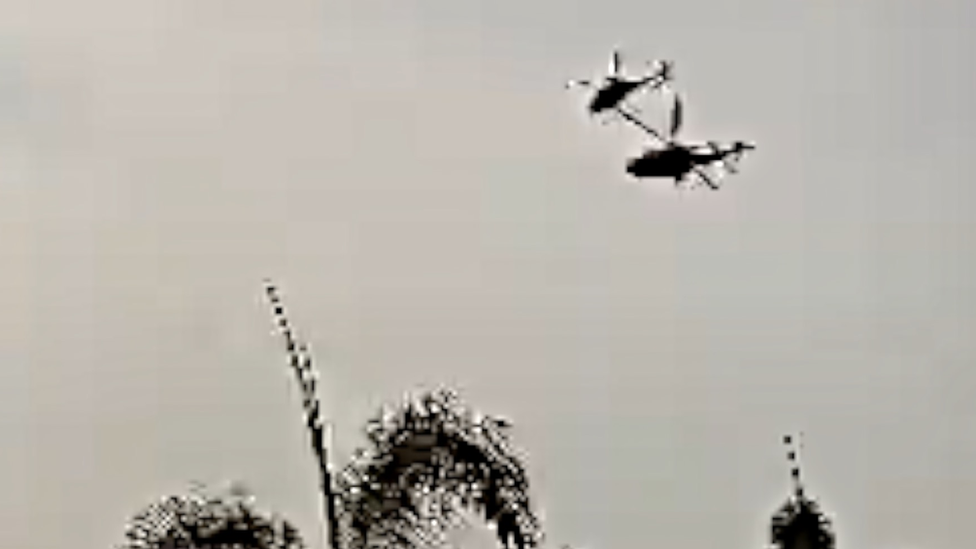Ten people tragically lost their lives after two navy helicopters collided in mid-air during a military rehearsal for a Royal Malaysian Navy parade. The incident, which took place in the town of Lumut, saw one of the choppers clip the rotor of the other before both came crashing down. Footage of the collision was captured and shared on local media. There were no survivors, and the victims’ remains were sent to the Lumut Military Hospital for identification.
Following the tragic incident, the Royal Malaysian Navy announced that a committee will be formed to investigate the cause of the collision. It was reported that one of the helicopters, a HOM M503-3, had seven individuals on board and crashed onto a running track, while the other, a Fennec M502-6 with three victims, crashed into a nearby swimming pool. The state’s fire and rescue department was alerted to the crash at 09:50 local time. Malaysia’s Prime Minister Anwar Ibrahim expressed his condolences to the families of the victims and offered prayers for strength in facing this calamity.
The nation mourned the loss of the ten individuals, with many expressing shock and sadness over the tragic accident. The Malaysian coast guard helicopter crash off Angsa Island in March served as a haunting reminder of the risks faced by military personnel during training flights and rehearsals. Despite the efforts of fishermen who rescued the pilot, co-pilot, and two passengers in the previous incident, the recent collision’s devastating outcome highlighted the dangers associated with military aviation operations. The entire country came together in mourning and solidarity for the victims and their families.
The collision of the two navy helicopters in Lumut underscored the importance of safety protocols and training procedures in military aviation operations. As investigations into the cause of the incident began, questions were raised about potential lapses in communication, coordination, or oversight that may have contributed to the tragic collision. The loss of ten lives in the line of duty served as a somber reminder of the sacrifices made by service members in protecting the nation’s security and interests. The tragedy also highlighted the resilience and unity of the Malaysian people in the face of adversity.
The Royal Malaysian Navy’s commitment to conducting a thorough investigation into the incident reflected the military’s dedication to ensuring the safety and well-being of its personnel. The formation of a committee to analyze the factors leading to the collision demonstrated a proactive approach to preventing similar accidents in the future. The navy’s efforts to learn from the tragedy and implement measures to enhance aviation safety was essential in upholding the organization’s professionalism and commitment to safeguarding its members’ lives.
Ultimately, the collision of the two navy helicopters in Lumut was a tragic event that shook the nation and reminded everyone of the risks faced by military personnel in their line of duty. As Malaysia mourned the loss of the ten victims, expressions of sympathy and support poured in from around the country. The incident served as a poignant reminder of the dangers inherent in military aviation operations and underscored the resilience and solidarity of the Malaysian people in times of crisis. The lessons learned from this tragedy will hopefully lead to improved safety measures and procedures to prevent similar incidents in the future.


